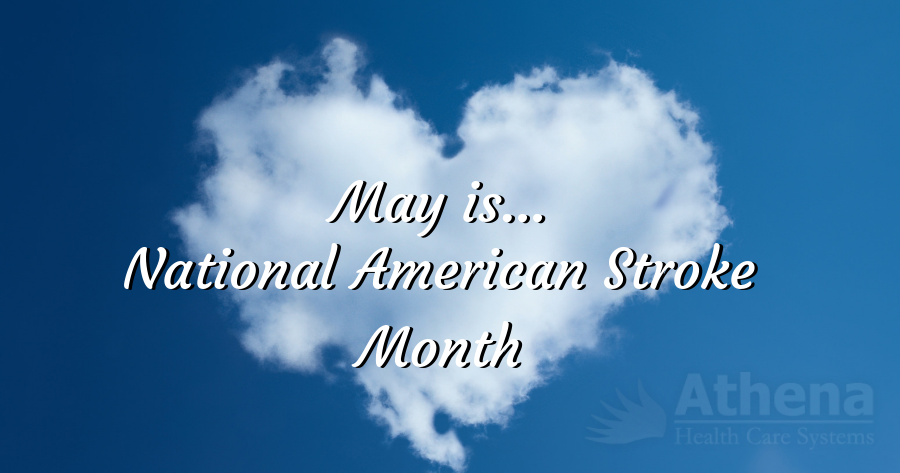National American Stroke Month
 According to the National Stroke Association, a stroke occurs every 40 seconds and is the 5th leading cause of death in the United States. Strokes and heart attacks are often discussed together, yet they are very different.
According to the National Stroke Association, a stroke occurs every 40 seconds and is the 5th leading cause of death in the United States. Strokes and heart attacks are often discussed together, yet they are very different.
A stroke happens when blood flow is cut off to any area of the brain. Lack of oxygen results in the death of brain cells, which can lead to many kinds of issues. The extent of the damage done largely depends on the size and type of stroke a person has. There are two categories of stroke, ischemic and hemorrhagic.
The majority of strokes, 87% of them to be exact, are Ischemic strokes. An ischemic stroke occurs when a blood clot cuts of blood flow to an area of the brain. Two subtypes of this stroke are embolic and thrombotic strokes. Embolic occurs when plaque or a clot travels to the brain and gets stuck in one of the brain’s blood vessels. A thrombotic stroke differs because the blog clot forms in the brain instead of in another body part.
The other 13% of strokes are hemorrhagic strokes. These occur when a brain aneurysm or weakened vessel in the brain leaks or ruptures.
Signs of a stroke include any sudden numbness or weakness of the face, arms, or body – especially just one side of the body. Dizziness, difficulty walking, seeing, speaking, or understanding; confusion or headache without apparent cause may also be warning signs of a stroke. Of course, any strange or unusual symptoms should be reported to your health care provider immediately.
If you feel you are at risk, or have any questions, it is important to discuss with your healthcare provider and follow any recommendation they may give. Following that, continue with appropriate care to keep your heart and brain healthy as they can be!

